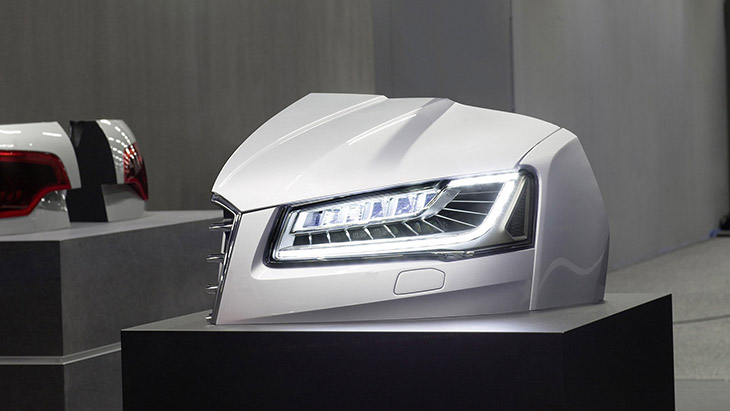 Audi of America is working with two of the nation’s leading institutions of engineering and design to come up with a test procedure that could form the heart of a new federal regulation covering the technology for the first time. The aim is to get the company’s highly advanced headlights into vehicles that can be sold in the United States, just as they are in other countries.
Audi of America is working with two of the nation’s leading institutions of engineering and design to come up with a test procedure that could form the heart of a new federal regulation covering the technology for the first time. The aim is to get the company’s highly advanced headlights into vehicles that can be sold in the United States, just as they are in other countries.
Rensselaer Polytechnic Institute, in Troy, N.Y., now is testing an Audi vehicle equipped with the Adaptive Driving Beam that has been available in the European premium auto market for several years. And the Transportation Research Institute at the University of Michigan, in Ann Arbor, Mich., just completed its own testing of ADB, which is based on technology known as MatrixBeam in Europe.
The point of the new testing by the two schools is to build on the work Audi has performed with U.S. Transportation Department regulators in creating an up-to-date, objective rule that would take into account the highly advanced digital lighting capabilities presented by ADB. Current federal regulations essentially ban any headlights using such systems, because ADB wasn’t envisioned many years ago when the headlight standard was written.
Today, all headlights in the U.S. market – even the state-of-the-art LED-based systems used in today’s cutting-edge vehicles – must comply with the old rule which requires lights to have both low and high beams, and to emit light based on conventional patterns.
But the pattern for the high beam in Audi ADB headlights isn’t comprehended by the existing standards. In the Audi technology, the system recognizes a preceding or oncoming vehicle at night, and a dynamically changing high beam actually avoids glaring out the other drivers by notching out those vehicles. It does this by carefully arraying its light emissions around those vehicles while still maintaining the maximum visibility of the high beam for the driver of the Audi.
There are no guarantees that regulators will allow Audi to offer ADB in the U.S. market, and any rule changes are likely years away. But with the help of the University of Michigan and RPI, Audi is moving closer to the goal of giving American drivers the advantage of having cars equipped with the most advanced headlight technology in the world.
Source: Audi